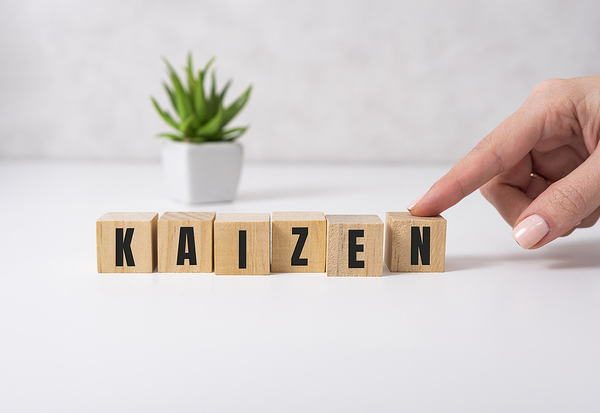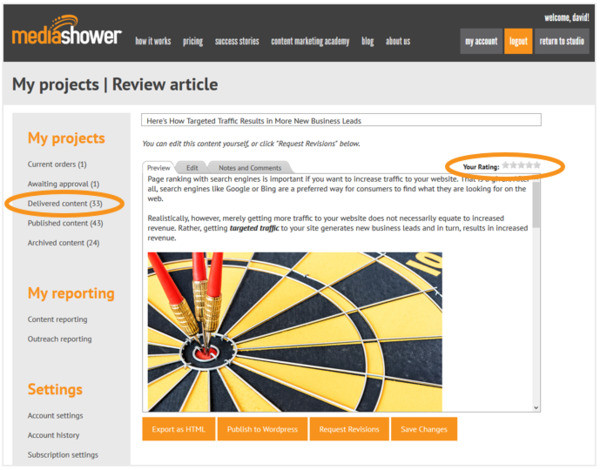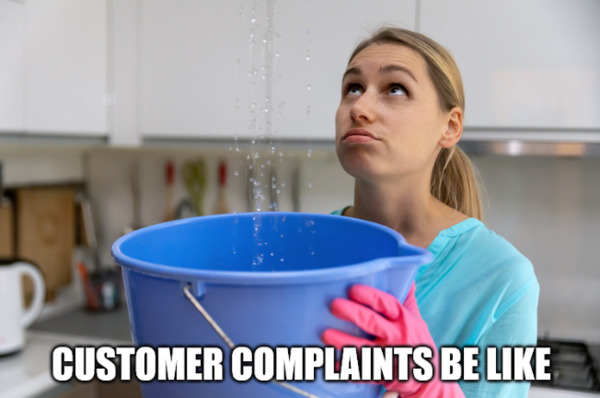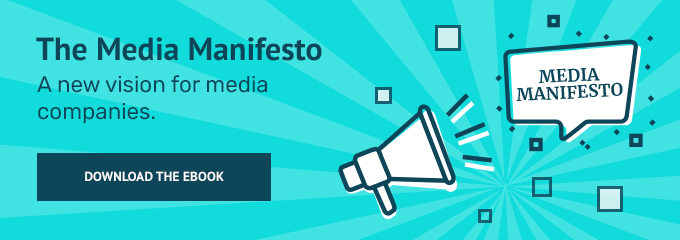
The client asked for the entire Media Shower team to join her on a conference call.
And then she let us have it.
It was a verbal flogging, telling us everything we had done wrong, and how unhappy she was with the work. She was expecting one thing, we delivered another. She wanted one set of results, she got another. The call lasted ten minutes, but it felt like ten years. She closed out the call by swearing at us in Spanish, and then she hung up.
There were a few moments of stunned silence as the Media Shower team, still on the conference line, tried to process what had just happened. Some were doing a Spanish-to-English translation.
I’ll be honest: my blood was boiling. I knew that we had delivered everything on time and on budget – but at the same time, I knew there were ongoing issues between her expectations and our results. This call, in other words, was not entirely unexpected.
“Well, she was crazy,” I wanted to say.
But I said this instead: “Well, that was a difficult call.”
I took a deep breath. “Now we have two ways of looking at this: we can either talk about all the ways we were right, and she was wrong…”
Here I gritted my teeth because the emotions were still running high. Struggling to regain control from my amygdala, I continued my sentence.
“…OR we can see what we can learn from her feedback.”

Kaizen is a Japanese philosophy of continually making a business better. It also sounds like “crazy.”
The Crazier, The Better
At Media Shower, our failures have often taught us more than our successes. (Here’s a story on that.)
Calling a customer “crazy” is the easiest way of dismissing their concerns. Often it’s these customers – the most outspoken and least-filtered — who tell you what you really need to hear. Everyone else is too polite.
To be sure, there were plenty of problems on the customer’s side. But we quickly made a list of the ways we could have better set expectations, better addressed her concerns.
“Seems like she didn’t know how to use the platform,” offered Jason. “We should do a better platform training on our kickoff call. Maybe a walkthrough.”
“She didn’t understand the content cycle,” added Debbie. “Maybe we train customers on when to expect the work each week, then deliver it on the same day. Make it a routine in their schedule.”
“When the customer doesn’t have time to review the work,” Melissa chimed in, “that creates a bottleneck. We should have a ‘safety valve’ that releases the work in progress, so it doesn’t pile up.”
“That pressure is what she was feeling,” I agreed. “Each week, the pile of work gets bigger, and then when she finally sits down to review it, she’s not happy, and the pressure just keeps building, until…”
“…until someone explodes,” finished Kate, laughing. That broke the tension.
So out of that call, we made several valuable changes to our process. For example:
- We now have better training slides that explain how to use our platform on the kickoff call
- We talk through what to expect: new work delivered every Monday, published every Thursday
- We have “auto approvals” set up in our system, for clients who are too busy to review the work
- We check in more frequently at the beginning of an engagement, to nip problems in the bud
- We have more “feedback loops” in our platform (for example, customer feedback ratings) that alert us to “yellow flags” and “red flags”
That all came out of one call with one “crazy” client. And the benefits of these changes have been immeasurable: they have made us millions of dollars in the form of happier customers, more referrals, and longer-lasting engagements.
What’s more, they’ve made our clients many more millions of dollars, because their work with Media Shower is now better. Their communication is better. And better communication makes better companies.

Clients can now give us real-time feedback on content, which is instantly emailed to editors. That’s crazy.
The Drive to Get Better
The fastest way to get better is to simply listen to your customers.
Note I didn’t say “easiest,” I said “fastest.”
Listening to customers is usually not easy, because customers will challenge us. They’ll tell us what we don’t want to hear: that our product or solution needs work, that our competitors are doing it faster or cheaper, that we’ve got to go back to the drawing board.
Our first reaction is to get defensive. This happens automatically, often taking the form of “IF” statements:
- IF they were using our product/service the way it was designed to be used…
- IF they were using it more regularly…
- IF they would take time to learn the features…
- IF they had read the manual…
- IF they had their own act together…
Our egos want to believe that we have the perfect solution, that anyone who tells us otherwise is crazy. Also, our egos don’t want to go back to the drawing board, because our egos are kind of lazy.
Note: We don’t have to react to every complaint from every customer. But we try to listen to all complaints, then identify recurring problems (we’ll call these “problem buckets”). We should also listen for suggestions, to find new ways of improving (we’ll call these “feature buckets”).

To override your fight-or-flight response, especially with angry customers, takes an effort of will. Your desire to learn – your drive to get better – has to override your desire to be “right.” In the heat of the moment, when emotions are running hot, this is difficult to do.
With practice, we can get better. We can do our best to listen as a neutral observer. We can write down or echo back the points we’re hearing. We can separate the helpful (legitimate problems or suggestions) from the unhelpful (everything else). We can find solutions. We can get better.
“The Crazy Client” is a story we tell all the time at Media Shower because we would have been crazy not to listen to her. That client made us so much better.

At Media Shower, we’re building a better media company. Read the manifesto, or get a free trial.